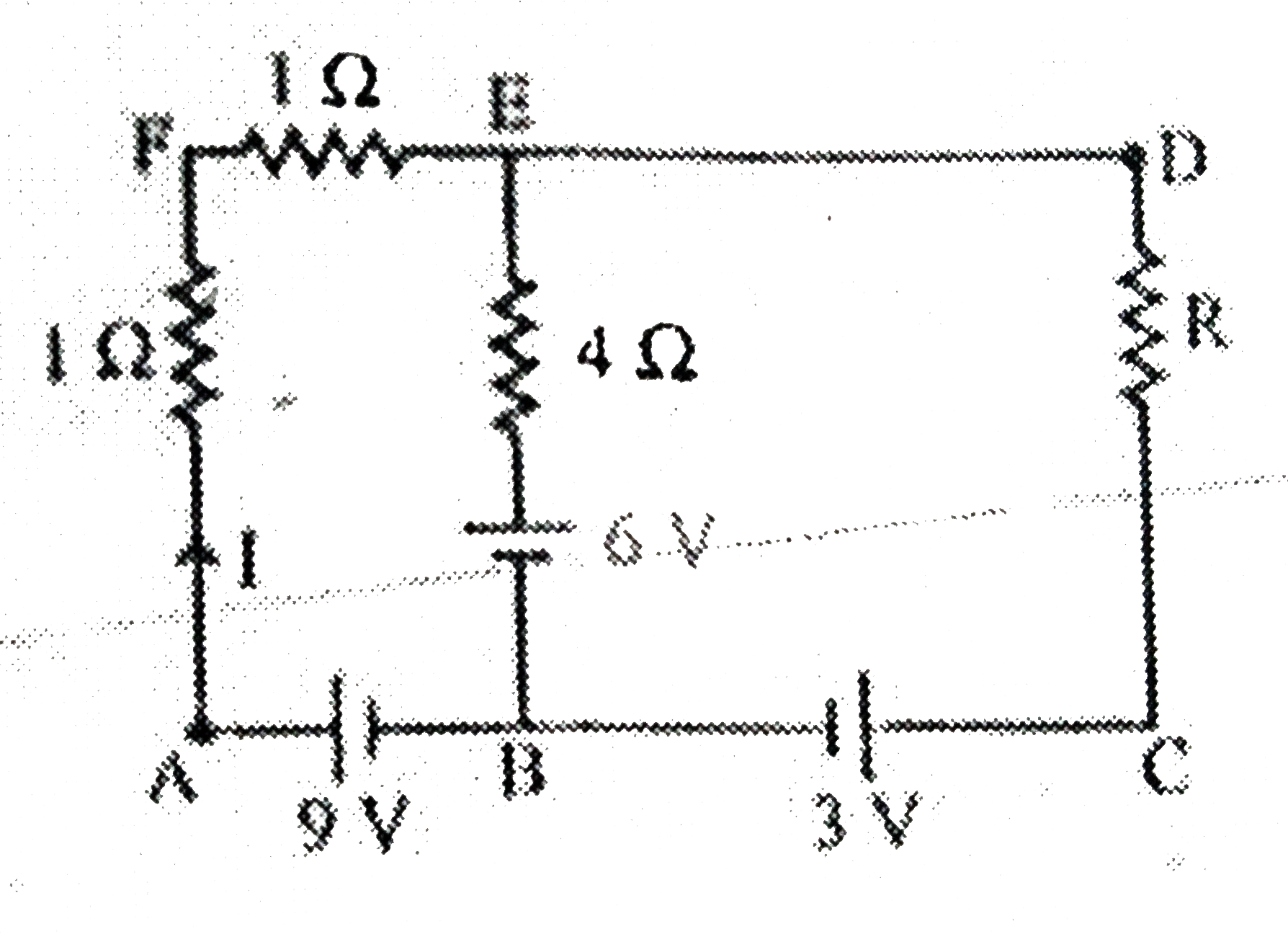Kirchoff's junction rule is a reflection of
conservation of current density vector
conservation of charge
the fact that the momentum with which a charged particle approaches a junction is unchanged (as a vector) as the charged particle leaves the junction
the fact that there is no accumulation of charges at a junction
The correct Answer is:B, D
To solve the question regarding Kirchhoff's junction rule, we can follow these steps:
1. Understand Kirchhoff's Junction Rule:
Kirchhoff's junction rule states that the total current entering a junction must equal the total current leaving the junction. Mathematically, this can be expressed as:
∑Iin=∑Iout
where Iin is the current flowing into the junction and Iout is the current flowing out of the junction.
2. Interpretation of the Rule:
This rule implies that there is no accumulation of charge at the junction. If there were an accumulation of charge, the currents entering and leaving would not be equal, which contradicts the rule.
3. Relate to Conservation Principles:
The rule reflects the principle of conservation of charge. Since charge cannot be created or destroyed in an electrical circuit, the amount of charge flowing into a junction must equal the amount flowing out.
4. Evaluate Other Options:
- Conservation of Current Density: This is not correct in this context because current density is not necessarily conserved at a junction.
- Momentum Considerations: The rule does not concern itself with the momentum of charged particles; it strictly deals with charge and current.
5. Conclusion:
Therefore, the correct reflection of Kirchhoff's junction rule is the conservation of charge. This means that the correct answer to the question is that Kirchhoff's junction rule is a reflection of the conservation of charge.
Kirchhoff's junction rule states that the total current entering a junction must equal the total current leaving the junction. Mathematically, this can be expressed as:
∑Iin=∑Iout
where Iin is the current flowing into the junction and Iout is the current flowing out of the junction.
This rule implies that there is no accumulation of charge at the junction. If there were an accumulation of charge, the currents entering and leaving would not be equal, which contradicts the rule.
The rule reflects the principle of conservation of charge. Since charge cannot be created or destroyed in an electrical circuit, the amount of charge flowing into a junction must equal the amount flowing out.
- Conservation of Current Density: This is not correct in this context because current density is not necessarily conserved at a junction.
- Momentum Considerations: The rule does not concern itself with the momentum of charged particles; it strictly deals with charge and current.
Therefore, the correct reflection of Kirchhoff's junction rule is the conservation of charge. This means that the correct answer to the question is that Kirchhoff's junction rule is a reflection of the conservation of charge.
Topper's Solved these Questions
- ELECTRIC CURRENT & CIRCUITSBOOK - CENGAGE PHYSICS ENGLISHCHAPTER - ELECTRIC CURRENT & CIRCUITSEXERCISE - Kirchhoff s law and simple circuits
15 Videos
- ELECTRIC CURRENT & CIRCUITSBOOK - CENGAGE PHYSICS ENGLISHCHAPTER - ELECTRIC CURRENT & CIRCUITSEXERCISE - Combination of Resistance 2
14 Videos
- COULOMB LAW AND ELECTRIC FIELDBOOK - CENGAGE PHYSICS ENGLISHCHAPTER - COULOMB LAW AND ELECTRIC FIELDEXERCISE - Single Answer Correct Type
22 Videos
- ELECTRIC CURRENT AND CIRCUITBOOK - CENGAGE PHYSICS ENGLISHCHAPTER - ELECTRIC CURRENT AND CIRCUITEXERCISE - Interger
8 Videos
Similar Questions
Knowledge Check
Assertion: Kirchhoff's junction rule can be applied to a juction of several lines or a point in a line.
Reason : When steady current is flowing, there is no accumulation of charges at any junction in series with a galvonometer.AIf both assertion and reason are true and reason is the correct explantion of assertion.BIf both assertion and reason are true and reason is not the correct explantion of assertion.CIf assertion is false but reason is true.DIf assertion is true but reason is false.
Gap junctions are present in :
View SolutionThe P-N junction is-
View SolutionIn Kirchoff's equation which factor affects the heat of reaction :
View SolutionGap junctions : -
View SolutionChange in enthalpy and change in internal energy are state functions. The value of ΔH,ΔU can be determined by using Kirchoff's equation.
I mole of naphthalene (C10H8) was burnt is oxygen gas at 25∘C at constant volume. The heat evolved was found to be 5138.8kJ. Calculate the heat of reaction at constant pressure
View SolutionUsing Kirchoff's rules determine the value of unknown resistance R in the circuit so that no current flows through 4Ω resistance. Also find the potential difference between A and D.

View SolutionChange in enthalpy and change in internal energy are state functions. The value of ΔH,ΔU can be determined by using Kirchoff's equation.
Calculate ΔH when 10dm3 of helium at NTP is heated in a cylinder to 100∘C, assuming that the gas behave ideally.
View Solution
